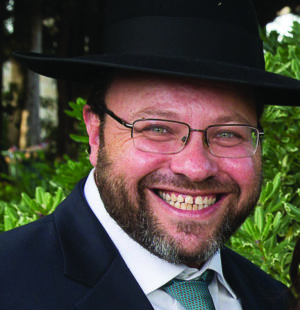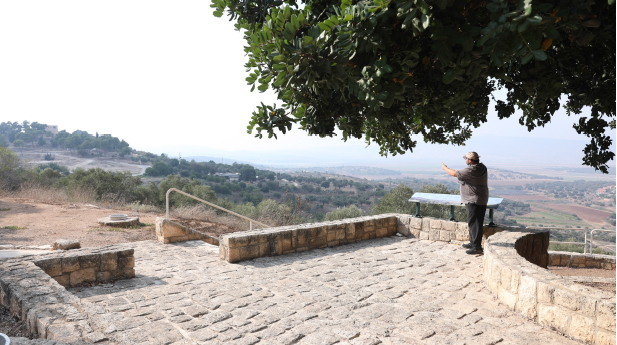True North

Jews were banned from Jerusalem for centuries after the Beis Hamikdash was destroyed, leaving the far-away Galil the new frontier. And Tzippori became the place to reframe

Photos: Menachem Kalish
Think Jewish history in Eretz Yisrael, and Jerusalem is obviously central. But Jews were banned from Jerusalem for centuries after the Beis Hamikdash was destroyed, leaving the far-away Galil the new frontier. And Tzippori became the place to reframe
Green Lights
I love Israel’s north. It’s not just the magnificent green mountains, valleys, streams, and fields, but the richness of the history of this area. Most tourists who come to Eretz Yisrael base themselves around Jerusalem — after all, it’s the holiest city, the capital of our country, the makom Hamikdash, the place we invoke in our prayers three times a day. Yet from a historical perspective, vibrant Jewish communal life in Jerusalem was essentially nonexistent from the time of the Bar Kochba revolt, which came on the heels of the destruction of the Second Beis Hamikdash, until around the 1700s. Rome banned the Jews from coming back to settle in Jerusalem, and over the centuries, although Jerusalem was never completely abandoned, there were never more than a few dozen families who lived there for any significant period of time. Even though there were thousand years of Jerusalem history prior to that, post-Churban Jewish Jerusalem isn’t more than a few hundred years old — and anything we find in Israel that isn’t at least 400 years old doesn’t even make it to the Antiquities Authority.
But the Galil, in the north of Eretz Yisrael, was a different story. Even after the Jews were banned from Jerusalem, the northern communities continued to flourish, while so much of the early history of our People — especially during the Mishnaic and Talmudic eras — took place in this incredible region. And Tzippori, the city we’re heading to today on our virtual tour — the place where Rabi Yehudah Hanasi settled for the last 17 years of his life as he compiled the Mishnah — was one of the most important.
Fair Trade
If you’ve been touring the Galil, coming from the Haifa area or perhaps Meron, in order to get to Tzippori you’ll probably pass through the Somech intersection, located in the valley between two hills where stood two great cities in the period of the Mishnah: Usha and Shefar’am. These are two of the five cities mentioned where the Sanhedrin rested after moving up north from Yavneh after the Churban. It was in this valley that Rabi Yehudah ben Bava clandestinely came to give semichah to five students during the period when the Romans passed a decree prohibiting the teaching of Torah under penalty that the cities caught violating the decree would be destroyed. Rabi Yehuda ben Bava therefore went outside of the cities so that the towns wouldn’t suffer retribution. The scholars were caught, however, and Rabi Yehudah ben Bava was killed right here, in the Somech intersection, by 300 spears that pierced his holy body.
Along this highway, which stretches down to Teveria, we pass lush fields, vineyards, and olive orchards. The Gemara shares a story of the great Amora, Rabi Yochanan, who was traveling down this very road with his student and he pointed out these wheat fields, olive groves, and vineyards and noted that they had all once belonged to him, but he sold them so that he would be able to study Torah. “I traded possessions and a world that were created in six days for Torah, which was given in 40 days,” were the words he used to console his student who was mourning their rebbi’s financial loss. And where did he go to learn? To the holy city of Tzippori.
Our first stop in this national park, built to preserve the remains of the ancient city, is the visitor center, where we can examine a model of the archeological site. We notice that there are really two cities here, an upper city and a lower city. While the Jews primarily lived in the upper city of this post-Temple metropolis, and the lower city was a bustling Roman commercial center, Rabi Yehudah Hanasi in fact taught Torah classes in the lower section, where the Romans lived and where the market was located (perhaps implying that he didn’t wait for the Jews to come to him, he came to them on their business turf).
The Gemara tells us that the Amora Rabi Elazar ben Padas was so engrossed in his learning Torah that one day he went down to study Torah in the lower city while leaving his cloak behind in the upper city. Someone once tried to steal the cloak, but there was a snake that was guarding it for him. What are the lessons to be learned? One, don’t try to snatch a rabbi’s cloak. Two, Rabi Elazar was so devoted to his learning that he didn’t realize he didn’t have his coat with him. For archeologists though, this Gemara is another proof, along with their excavations, that Jews lived in the upper city but their place of study was in the lower one.
Oops! We could not locate your form.













